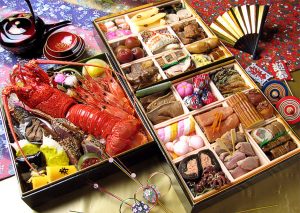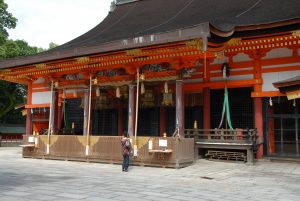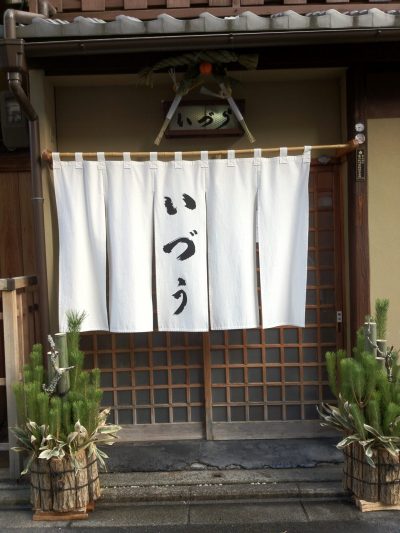New Year’s Day (shogatsu) is said to be the most important holiday for the Japanese. It begins at night on December 31st and goes until January 3rd. During this time, most businesses’ are closed and families come together for the festive period.
Food, Food, Food.

Black Beans: Usually made sweet, they are said to represent hard work.
Datemaki: A type of sweet rolled egg mixed with fish cake, the dish is supposed to represent scholarship.
Kobumaki/Konbumaki: A type of rolled kelp dish. In Japan, many different types of kelp and seaweed are eaten, but this particular kind is called konbu. It is supposed to represent happiness.
Traditions Old and New.

Shrine visits as a family or “Hatsumode” on the 1st, 2nd, or 3rd day of the year to pay respects and wish for a happy and healthy year, as well as watching the first sunrise of the new year (Hatsuhinode) are age-old customs that are still very popular today. At midnight on December 31, Buddhist temples all over Japan ring their bells a total of 108 times to symbolize the 108 human sins in Buddhist belief and to get rid of the 108 worldly desires. A major attraction is The Watched Night bell, in Tokyo. A newer but very popular tradition is called Fukubukuro. Fukubukuro are goodie bags sold by department stores. The goods in the bag are often worth much more than what the bag is sold for but the consumer doesn’t get to know what’s inside before they buy it. Otoshidama is a tradition that consists of giving children in the family envelopes of money. Another popular custom is to write postcards to family and friends during this holiday and send them to arrive on January 1st, much like the western tradition of sending Christmas cards.





